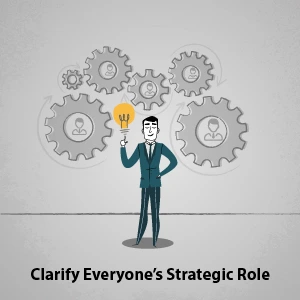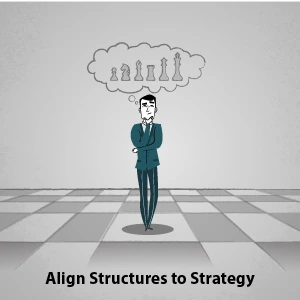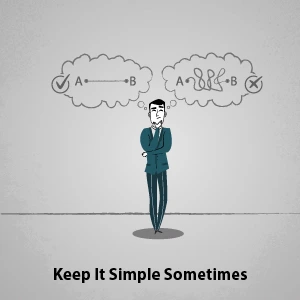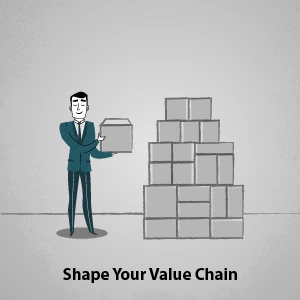A sound strategy backed up by effective execution is the mantra for success. If this is so simple then why do only a few companies make the cut? This is so because it is easier said than done as you, as you wade through the mire of realities untangling the tangled vines of business and trudging through the weeds, you often lose sight of the aim or the execution goes off the rails. The latter happens since execution is a function of decisions being taken big or small.
Quality, innovation, profitability, and growth come together only when the two pieces of the puzzle strategy and execution fit to perfection. How does one ensure that they fit? There are 10 principles that if made the way of life at an organization could help do this effectively.

Aim high with your strategy, articulate how is your offering going to make people’s lives better. Think Big. Think Bold.
The same goes with the execution – aim high on the execution side, with a dedication to excellence that seems almost obsessive to outsiders.
A strong long-term strategy with an equally strong commitment to excellence can transform a company.
To execute the first principle one needs commitment from the top executives in the organization. A clear message needs to be established, around the goals and their relevance, followed by a commitment to see them through. Lofty goals take time to realize, the top management needs to understand that and factor in the patience required and not resort to shortcuts for quick gains. Only when the commitment flows from the top down will you be able to hire like-minded, committed talent to take the company through the journey of successful execution.

We are all tempted to grab the low-hanging fruit for quick wins, which may lead to a journey down a path that may not truly align with your strategic goals.
Hence define your strengths and what makes them pertinent to achieving your strategic goal.
Articulate all the different things that need to happen to make these capabilities work, and figure out what it will take to build on your strengths to succeed consistently in the future.
Test your capabilities, the more you test, the more likely you are, to find opportunities to help build-up your strengths.
Consistently analyse what you do best, gather data about your practices, and conduct post-mortems. Learn from every job and explore how you can continue to raise the bar.

The managers need to develop the ability to switch hats from the Boardroom to Frontline. In other words, they should be able to think and execute equally well on both ends. This ability will define the capability of the manager to manage strategy and execution with equal competence. For the successful execution of strategy, people across the enterprise will need to master ambidexterity.

Commitment comes when one realizes that they visibly contribute to the realization of the company’s vision.
Successful leaders spend a great deal of time and attention on articulating roles and responsibilities and how they roll up to fulfilling the company’s goal.

To deliver on your value proposition, you need to build on capabilities that help achieve the objective. Towards this end, the organizational structure, hierarchy, and hiring need to align to this larger goal.
Structures that do not align with the strategy will become stumbling blocks over time.
Set up your organizational structures, including your hierarchical design, decision rights, incentives, and metrics, so they reinforce your company’s identity: your value proposition and critical capabilities. If the company structure does not support your strategy, consider removing them or changing them altogether. Else they will become obstacles.

Avoid resurrecting functional barriers. Cross-functional teams should be encouraged to work together collaboratively. It enables each employee to view each other as contributing to a larger goal, rather than perceive a set of employees as gatekeepers of their expertise.

Never has customer experience been more important than it is today, across all channels of operation. Omnichannel adoption while delivering a superlative customer experience has mandated that each organization embrace digital technology’s potential to create fundamentally new experiences and interactions not only for your customers but for your employees, and every other constituent.
Complete digitization will inevitably broaden your range of strategic options, enabling you to pursue products, services, and innovations that weren’t feasible before.
The biggest constraint is no longer the cost and difficulty of implementation. It is the ability to combine business strategy, user experience, and technological prowess, distinctively.

The principle “keep it simple, sometimes” combines three concepts in one: First, be as simple as possible. Second, let your company’s strategy be your guide in adding the right amount of complexity. Third, build the capabilities needed to effectively manage the complexity inherent in serving your markets and customers.

No company can operate in isolation. We all depend on service providers outside of our business for either raw materials or order fulfilment. It is critical not only to create the network but to nurture it. As you raise your game, you will raise their game too.
Since these partners are working with you on execution, they should also be actively involved in your strategy. That means selling them your strategy, getting them excited about taking the partnership to a whole new level and backing up your strategic commitment with financial, analytical, and operational prowess.

To speed up the pace of growth, an organization, needs to adopt collective mastery. A cultural attribute that involves creating an atmosphere where communication is fluid, open, and constant. It enables your strategists to alk easily with functional specialists to understand what will or will not work. Your functional specialists not only know what they’re supposed to do but why it matters. Everyone moves quickly and decisively because they have the ingrained judgment on who to consult, and when. People trust one another to make decisions on behalf of the whole.
This culture encourages risk-taking. Collective mastery builds over time. It comes from employees getting the support and encouragement they need to work readily across organizational boundaries with ease, backed-up with a high level of trust and frequent informal contact.
The Organization needs to be flexible to achieve this. Collective mastery also makes it easier to conduct experiments without making a huge commitment.
The 10 principles for successful execution help create a focused goal-oriented high performing organization with a culture of committed people with a high level of ownership. This not only bodes well for success but enables an organization to reach beyond the decided goals.
